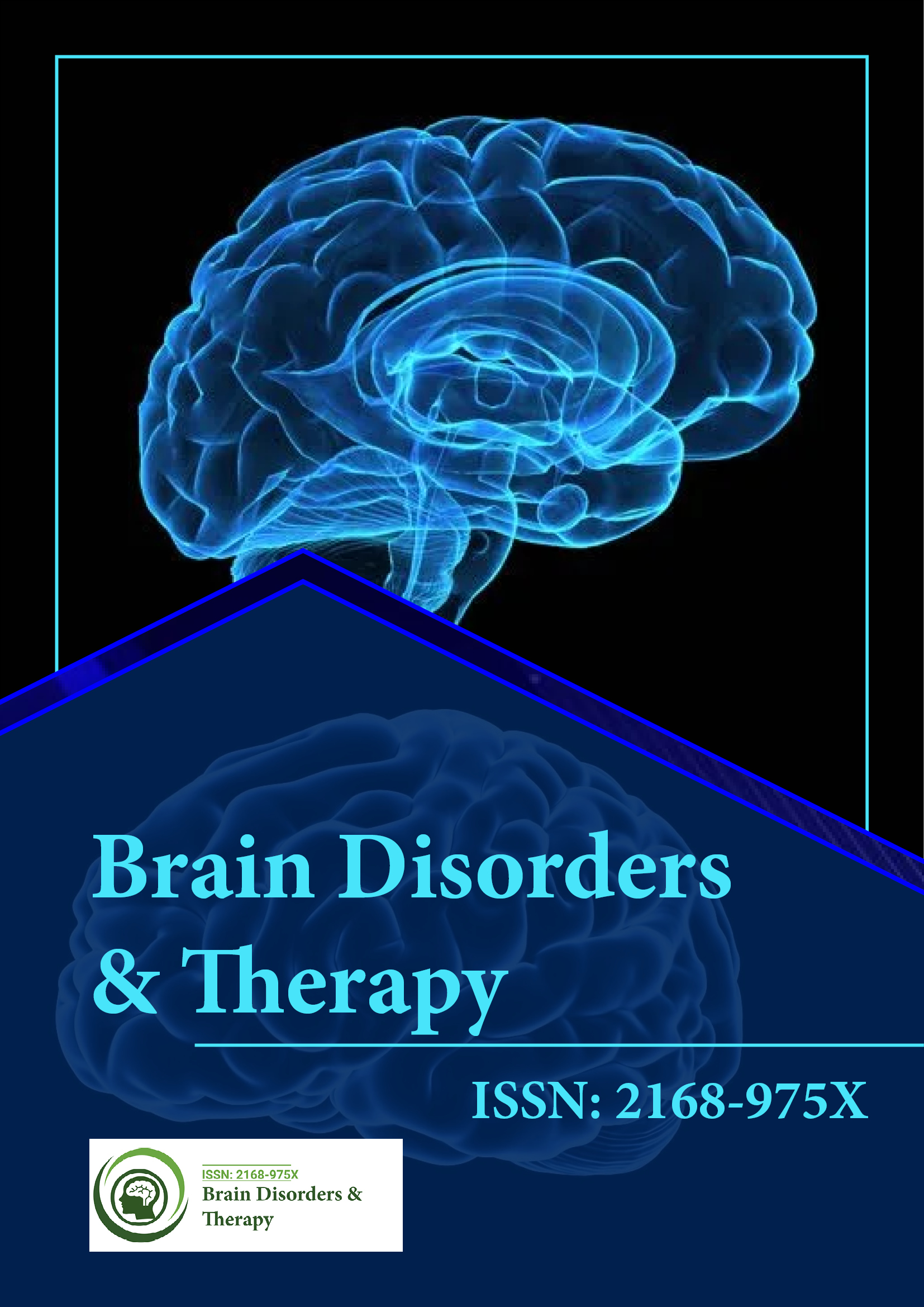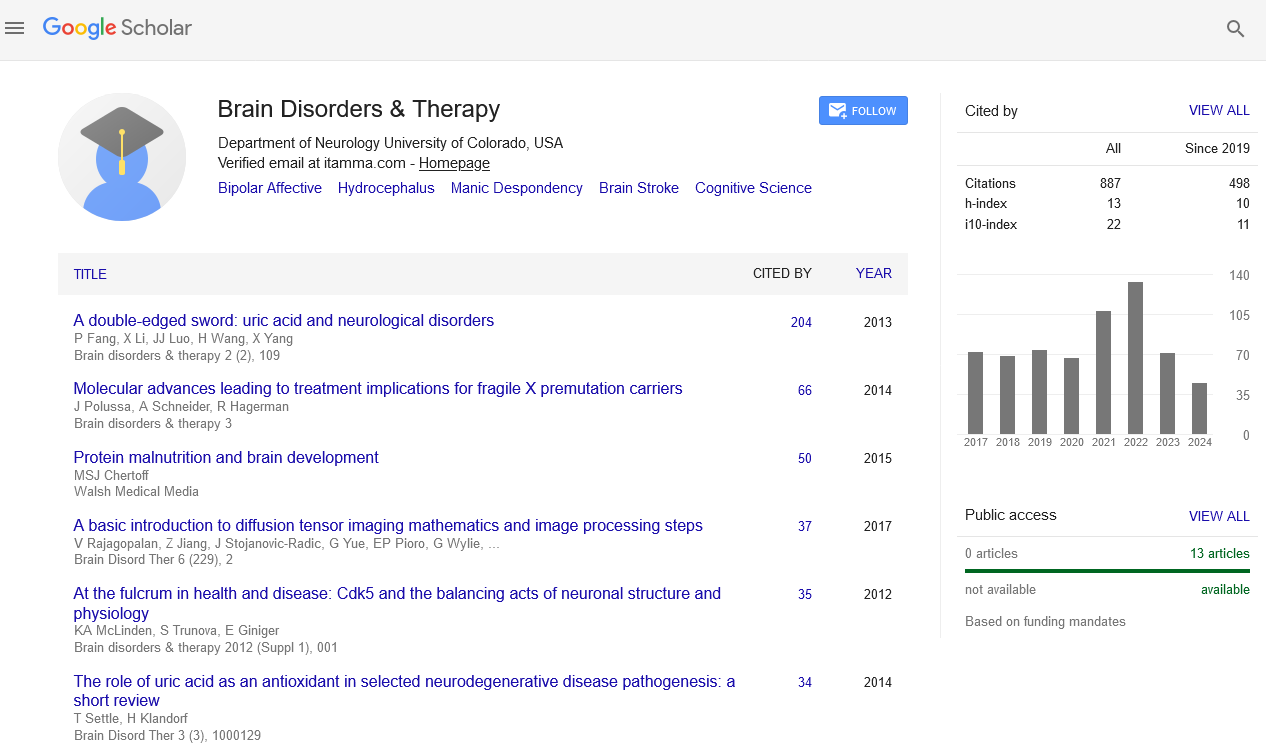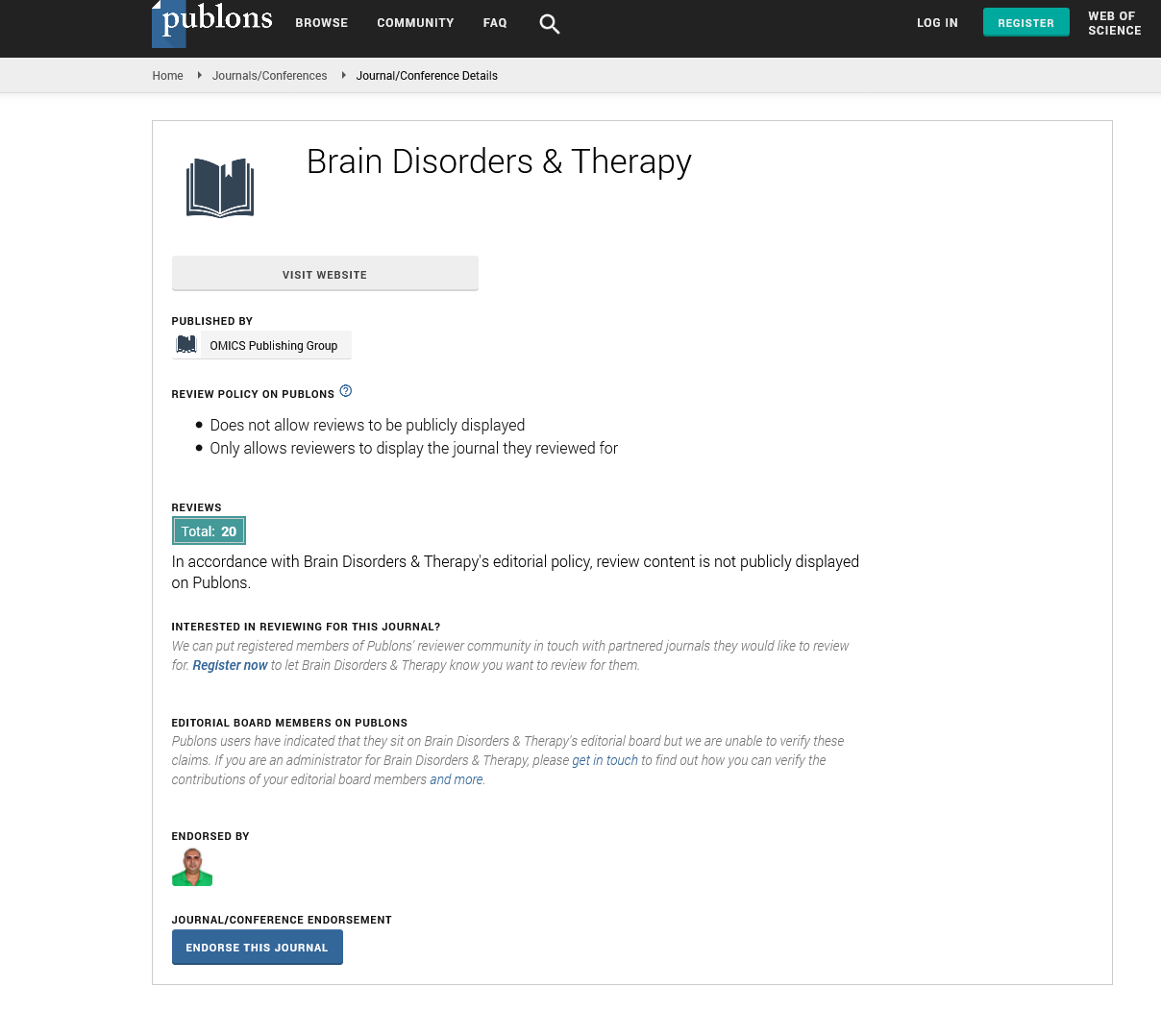Indexed In
- Open J Gate
- Genamics JournalSeek
- JournalTOCs
- RefSeek
- Hamdard University
- EBSCO A-Z
- OCLC- WorldCat
- Publons
- Geneva Foundation for Medical Education and Research
Useful Links
Share This Page
Journal Flyer

Open Access Journals
- Agri and Aquaculture
- Biochemistry
- Bioinformatics & Systems Biology
- Business & Management
- Chemistry
- Clinical Sciences
- Engineering
- Food & Nutrition
- General Science
- Genetics & Molecular Biology
- Immunology & Microbiology
- Medical Sciences
- Neuroscience & Psychology
- Nursing & Health Care
- Pharmaceutical Sciences
The correlation between binaural perception and brain stem lesions
International Conference on Brain Disorders & Therapeutics
August 24-26, 2015 London, UK
Miriam Furst
Tel Aviv University, Israel
Scientific Tracks Abstracts: Brain Disord Ther
Abstract:
Multiple sclerosis (MS) is a disease that is both a focal inflammatory and a chronic neurodegenerative disease. The focal inflammatory component is characterized by destruction of central nervous system myelin including the spinal cord; as such it can impair any central neural system including the auditory system. While on the one hand auditory complaints in MS patients are rare compared to other senses, such as vision and proprioception, on the other hand auditory tests of precise neural timing are never �??silent.�?� Whenever focal MS lesions are detected involving the pontine auditory pathway, auditory tests requiring precise neural timing are always abnormal. Azimuth sound localization is accomplished by comparing the timing and loudness of the sound at the two ears. Hence tests of azimuth sound localization must obligatorily involve the central nervous system and particularly the brainstem. Whenever a focal lesion was localized to the pontine auditory pathway, timing tests were always abnormal. A timing test that included only high frequency sounds was very often abnormal even when there was no detectable focal MS lesion involving the pontine auditory pathway. This test may be a marker for the chronic neurodegenerative aspect of MS, and as such could be used to complement the MRI scan in monitoring the neurodegenerative aspect of MS. Studies of MS brainstem lesion location and auditory function have led to advances in understanding how the human brain processes sound. The brain processes binaural sounds independently for time and level in a two stage process. The first stage is at the level of the superior olivary complex (SOC) and the second at a level rostral to the SOC.
Biography :
Miriam Furst received the BSc and MSc degrees in Applied Mathematics and the PhD degree in Biomedical Engineering from Tel Aviv University, Ramat Aviv, Israel, in 1973, 1975, and 1981 respectively. From 1982 to 1984, she was a Post-Doctoral Fellow in the Research Laboratory of Electronics, Massachusetts Institute of Technology (MIT), Cambridge. Since 1984, she has been a faculty member with the Department of Electrical Engineering Systems, Tel Aviv University. Her main research interest is the auditory system as part of a wider interest in human communication channels. She has published more than 50 papers.
Email: mira@eng.tau.ac.il


